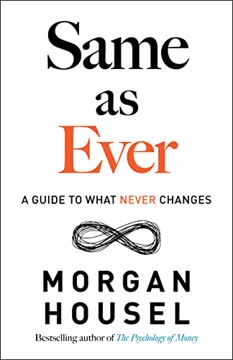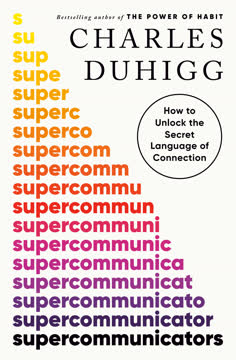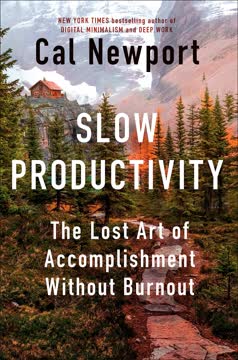つの重要なポイント
1. タフネスの再定義:押し通すから不快感を乗り越えるへ
真のタフネスとは、不快感や苦痛を経験し、それに向き合い、注意を払い、思慮深い行動を取るための余地を作ることです。不快感を乗り越えて、最善の決断を下すことが求められます。
旧モデル vs. 新モデル。 従来のタフネスの見方は、痛みを押し通し、感情を無視し、どんな犠牲を払っても「やり抜く」ことを強調していました。このアプローチはしばしば燃え尽き症候群、怪我、そして誤った意思決定を引き起こします。新しいタフネスのモデルは以下に焦点を当てています:
- 認識:不快感を認識し、受け入れること
- 関与:困難な状況に立ち向かうこと
- 思慮深い行動:反応的な決定ではなく、意図的な選択をすること
- 柔軟性:状況に応じて戦略を適応させること
新しいアプローチの利点。 タフネスを単なる耐久力ではなく、ナビゲーションのスキルとして再定義することで、個人は以下のことが可能になります:
- 高圧的な状況でのパフォーマンス向上
- より大きなレジリエンスと適応力の開発
- ストレス下でのより良い意思決定
- 燃え尽き症候群を避け、長期的な健康を維持
2. 現実を受け入れる:正確な自己評価がパフォーマンスの鍵
パフォーマンス = 実際の要求 ÷ 期待される要求
現実的な期待が重要。 状況の要求と自分の能力を正確に評価することは、最適なパフォーマンスを発揮するために不可欠です。このバランスを取ることで、以下のことが可能になります:
- 適切な目標設定
- 効果的なリソース配分
- 不必要なストレスや失望の回避
より良い自己評価のための戦略:
- 客観的なフィードバックを収集する
- 過去のパフォーマンスを振り返る
- メンターやコーチからの意見を求める
- 定期的に自己評価を更新する
期待を現実に合わせることで、過信と失望のサイクルを避け、持続的な成長と改善の基盤を築くことができます。
3. 真の自信は静かに:外面的な虚勢ではなく内面的な強さを育む
傲慢は不安の上に座り、自信は経験の上に座る。
静かな自信 vs. 大きな不安。 真の自信は自己認識、経験、そして自分の能力の現実的な評価に根ざしています。それは大声で宣言したり、常に示す必要はありません。対照的に、傲慢や虚勢はしばしば深い不安を隠しています。
内面的な自信を育む:
- 個人的な成長とスキルの開発に焦点を当てる
- 小さな勝利と進歩を祝う
- 失敗や挫折から学ぶ
- 成長マインドセットを育む
- 自己慈愛を実践する
経験と自己認識に基づいた真の自信を築くことで、挑戦に直面したときによりレジリエントになり、成功と失敗の両方に対処する能力が向上します。
4. コントロールと選択:レジリエンスの基盤
コントロールがないと、対処する能力を失います。選択肢があるときにタフネスが鍛えられます。
認識されたコントロールの力。 自分の状況に対するコントロール感を持つことは、レジリエンスとタフネスを育むために重要です。個人が選択肢を持ち、結果に影響を与えることができると信じるとき、以下のことが可能になります:
- 挑戦に直面しても持続する
- モチベーションを維持する
- 問題に対する創造的な解決策を開発する
コントロール感を高めるための戦略:
- 影響を与えられる領域を特定する
- 大きなタスクを小さく管理可能なステップに分ける
- 低リスクの状況で意思決定を練習する
- 過去に成功したコントロールの行使を振り返る
リーダーや教育者は、自律性と意思決定を許容する環境を作ることで、レジリエンスを育むことができます。
5. 感情をメッセンジャーとして:体のシグナルに耳を傾ける
感情はメッセージを送り、情報を伝え、行動を促します。
感情を情報として。 感情を克服すべき障害と見るのではなく、新しいタフネスのモデルはそれらを内部および外部の環境に関する貴重な情報源として認識します。これらのシグナルを解釈することを学ぶことで、以下のことが可能になります:
- より情報に基づいた意思決定
- 挑戦に対するより効果的な対応
- 全体的な幸福の向上
感情知能の開発:
- マインドフルネスを実践して感情の認識を高める
- 感情を具体的にラベル付けすることを学ぶ
- 感情反応の根本原因を探る
- 意思決定プロセスにおいて感情をデータポイントとして使用する
感情を敵ではなくメッセンジャーとして扱うことで、その力を活用して行動を導き、パフォーマンスを向上させることができます。
6. 内なる対話をマスターする:自己対話の柔軟性
メッセンジャー(感情)が十分に大声で叫ぶと、対応する思考が意識に入り、行動や反応を促します。内なる対話は、さまざまなシステムや自己を統合し、懸念や動機を意識に持ち込み、それに対して何をするかを決定する役割を果たします。
自己対話の力。 内なる対話は、挑戦をどのように解釈し、対応するかに重要な役割を果たします。自己対話の柔軟性を高めることで、以下のことが可能になります:
- ネガティブな状況を再構築する
- モチベーションと自信を高める
- 感情をより効果的に調整する
- プレッシャー下でより良い意思決定を行う
内なる対話をマスターするための戦略:
- 現実を無視せずにポジティブな自己対話を実践する
- 心理的距離を取るために三人称や二人称の言葉を使用する
- モチベーショナルなフレーズやマントラのレパートリーを開発する
- ネガティブな自己対話に挑戦し、再構築する
内なる対話に対する意識を高め、意図的に行うことで、困難な状況をよりうまく乗り越え、レジリエントなマインドセットを維持することができます。
7. 反応ではなく対応する:刺激と反応の間にスペースを作る
現実に対応する。ほとんどの人にとって、私たちは実際のストレスだけでなく、その反響にも対応しています。タフな個人は、認識を現実に一致させ、誇張された反応ではなく適切な反応を引き出すことを学びます。
スペースの重要性。 刺激(例:ストレスフルな出来事)と反応の間にギャップを作ることで、自動的に反応するのではなく、より効果的な行動を選択することができます。このスペースを作ることで、以下のことが可能になります:
- 状況をより正確に評価する
- 複数の選択肢を考慮する
- 感情を調整する
- 価値観や目標に一致した反応を選ぶ
スペースを作るためのテクニック:
- マインドフルネス瞑想を実践する
- 「一時停止して呼吸する」テクニックを使用する
- 決定を下す前に個人的な「冷却期間」を設ける
- 自分を中心に置くためのパフォーマンス前のルーチンを開発する
この一時停止して思慮深く対応する能力を育むことで、プレッシャー下でより良い意思決定を行い、ストレスフルな状況をエスカレートさせることを避けることができます。
8. 最適なパフォーマンスのために柔軟な対処戦略を育む
最も優れたパフォーマーは、柔軟で適応力のある対処能力を持っています。彼らは状況の要求に応じて異なる戦略を使い分けることができます。
適応力が鍵。 単一の対処戦略に頼るのではなく、真にタフな個人は、直面する特定の課題に基づいて柔軟に適用できるさまざまなテクニックを開発します。この適応力により、以下のことが可能になります:
- 多様な状況により効果的に対応する
- さまざまな条件下でパフォーマンスを維持する
- 挫折からより迅速に回復する
対処ツールボックスの開発:
- 短期的なストレス緩和のための気晴らし技術
- 意識を高めるためのマインドフルネス実践
- 視点を変えるための認知再構築
- 実行可能な課題に対する問題解決戦略
- 適切な場合の社会的支援の求め方
多様な対処戦略を育み、それぞれを適用するタイミングを学ぶことで、個人は個人的および職業的な課題の複雑な風景をよりうまくナビゲートすることができます。
9. 基本的な心理的ニーズを満たして真のタフネスを育む
ニーズを満たすことで、私たちは潜在能力を発揮することができます。基本的なニーズを満たすことは、タフになるために開発したすべてのツールを活用するための燃料です。
タフネスの基盤。 自律性、能力、そして関連性という基本的な心理的ニーズを満たすことで、タフネススキルを開発し、適用するための安定したプラットフォームが作られます。これらのニーズが満たされると、個人は以下のことが可能になります:
- 挑戦に直面しても持続する
- 内発的な動機を維持する
- レジリエンスと適応力を開発する
心理的ニーズを満たすための戦略:
- 自律性:選択と自己指導の機会を求める
- 能力:挑戦的だが達成可能な目標を設定し、進歩を祝う
- 関連性:意味のある関係と社会的支援を育む
リーダー、教育者、コーチは、外部の動機付けや懲罰的な手段に頼るのではなく、これらの基本的なニーズをサポートする環境を作ることで、タフネスを育むことができます。
10. 不快感に意味を見出す:トラウマ後の成長への道
避けるのではなく探求することで、経験を自分の物語に統合することができます。苦しみや困難から意味を見出すことができます。意味は心をまとめる接着剤であり、対応と回復の両方を可能にします。
逆境を変える。 困難な経験に意味を見出すことで、挑戦を乗り越えるだけでなく、そこから成長することができます。このトラウマ後の成長のプロセスにより、個人は以下のことが可能になります:
- より大きなレジリエンスを開発する
- 人生に対する新しい視点を得る
- 関係と共感を深める
- 新しい強みと能力を発見する
意味を見出すための戦略:
- 挑戦がどのように価値観や優先順位を形作ったかを振り返る
- 困難な経験から学んだ教訓を特定する
- 苦しみをより大きな目的や目標に結びつける
- 自分の物語を他者と共有し、つながりを作り、インスピレーションを与える
不快感や逆境を成長と意味の機会として再構築することで、私たちはすべての生活領域で役立つ、より堅牢で適応力のあるタフネスを開発することができます。
最終更新日:
FAQ
What's Do Hard Things about?
- Redefining Toughness: The book challenges traditional views of toughness, which often focus on stoicism and emotional suppression, advocating instead for a model that includes vulnerability and emotional awareness.
- Four Pillars Framework: Steve Magness introduces four pillars—Ditch the Facade, Listen to Your Body, Respond Instead of React, and Transcend Discomfort—to build real inner strength and resilience.
- Scientific Approach: It integrates research from psychology, neuroscience, and sports science to explain the mechanisms behind resilience and emotional regulation.
Why should I read Do Hard Things?
- Practical Strategies: The book offers actionable advice for developing resilience in various life areas, from sports to personal challenges, making it applicable and useful.
- Challenging Misconceptions: It confronts outdated beliefs that equate toughness with emotional callousness, encouraging readers to embrace emotions as part of strength.
- Inspiring Examples: Magness shares stories from athletes, coaches, and military personnel, making the concepts relatable and engaging.
What are the key takeaways of Do Hard Things?
- Embrace Vulnerability: True toughness involves understanding and accepting emotions, which aids in better decision-making and resilience.
- Control and Autonomy: Having control over choices and actions is crucial for persistence through challenges, fostering empowerment.
- Interoception Importance: Understanding bodily signals is vital for navigating discomfort and enhancing emotional regulation and decision-making.
How does Do Hard Things redefine toughness?
- Rejecting Old Models: The book critiques traditional toughness views that equate it with emotional suppression, advocating for emotional intelligence and vulnerability.
- Emphasizing Inner Strength: Real toughness is about navigating discomfort and making thoughtful decisions, fostering resilience rather than fragility.
- Science and Experience: Magness combines scientific research with personal anecdotes to illustrate how redefining toughness can lead to better outcomes.
What are the four pillars of toughness in Do Hard Things?
- Ditch the Facade: Encourages embracing true selves and acknowledging limitations to cultivate genuine resilience.
- Listen to Your Body: Stresses tuning into bodily sensations and emotions for better decision-making and emotional regulation.
- Respond Instead of React: Focuses on maintaining a steady mind and responding thoughtfully rather than impulsively.
- Transcend Discomfort: Teaches that discomfort can be a source of growth, finding meaning in challenging experiences.
What is the significance of interoception in Do Hard Things?
- Understanding Bodily Signals: Interoception involves perceiving internal bodily signals, crucial for recognizing emotional states and informed decision-making.
- Enhancing Emotional Regulation: Improved interoceptive awareness aids in managing emotions and stress responses, linked to greater resilience.
- Practical Exercises: The book provides exercises to develop interoceptive skills, helping readers listen to their bodies for improved performance.
How does Do Hard Things address the relationship between emotions and decision-making?
- Emotions as Informative: Emotions serve as valuable messengers, providing insights into needs and responses, guiding better decision-making.
- Navigating Discomfort: Listening to emotions helps make informed choices about responding to challenges, preventing impulsive reactions.
- Building Emotional Intelligence: Magness encourages developing emotional awareness and regulation skills for improved resilience and effective navigation of complex situations.
What role does control play in developing toughness according to Do Hard Things?
- Empowerment Through Choice: Having control over actions and decisions is vital for resilience, fostering empowerment and persistence.
- Avoiding Learned Helplessness: Environments that strip autonomy can lead to helplessness, diminishing motivation and resilience.
- Training Hopefulness: Fostering a sense of control trains individuals to respond positively to adversity, enhancing well-being and toughness.
How does Do Hard Things define emotional regulation?
- Emotional Regulation as a Skill: It involves managing and responding to emotions healthily, recognizing feelings, understanding sources, and choosing appropriate responses.
- Importance of Awareness: Being aware of emotions is the first step in regulation, allowing thoughtful responses rather than impulsive reactions.
- Coping Strategies: Magness provides strategies like mindfulness and cognitive reframing to develop emotional regulation skills applicable in various situations.
What are the coping strategies discussed in Do Hard Things?
- Adjusting State of Mind: Shifting between mental states, like focusing on a task or gaining perspective, helps manage stress and maintain focus.
- Attending to Discomfort: Confronting discomfort directly aids in navigating emotions and developing resilience.
- Flexible Coping: Adaptability in coping strategies allows choosing the most effective approach based on the situation, key to maintaining mental toughness.
How does Do Hard Things address the concept of purpose?
- Purpose as a Motivator: A clear sense of purpose is essential for resilience and persistence, driving individuals through challenges.
- Finding Meaning in Suffering: Meaning derived from difficult experiences helps cope with adversity, viewing challenges as growth opportunities.
- Aligning Goals with Values: Aligning goals with personal values and passions fosters intrinsic motivation, aiding commitment to pursuits.
How can I apply the concepts from Do Hard Things in my life?
- Practice Self-Awareness: Tune into emotions and bodily sensations, reflecting on their influence on decisions and actions.
- Set Meaningful Goals: Align goals with values and passions to foster intrinsic motivation and commitment.
- Embrace Discomfort: Confront difficult situations head-on, seeking meaning in experiences to develop resilience and navigate challenges effectively.
レビュー
本書『Do Hard Things』は賛否両論の評価を受けており、平均評価は3.86/5である。多くの読者は、タフネスの再定義に関する洞察や、科学と個人的な逸話を融合させた点を称賛している。スポーツ、メンタルヘルス、個人の成長における実践的な応用が評価されている一方で、批評家は科学的分析の深さや独自性に欠けると指摘している。また、スポーツに焦点を当てすぎていると感じる人もいる。支持者は、その読みやすい文体と、レジリエンス、マインドフルネス、パフォーマンスに関する貴重な教訓を強調している。総じて、内なる強さを育み、挑戦を乗り越えるための思考を刺激する一冊と見なされている。
Similar Books















